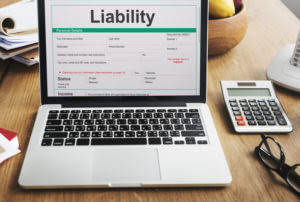
Get stock recommendations, portfolio guidance, and more from The Motley Fool’s premium services. In 2021, the share repurchases are assumed to be $5,000, which will be subtracted from the beginning balance. But an important distinction is that the decline in equity value occurs due to the “book value of equity”, rather than the market value. Therefore, the stockholder’s equity of Apple Inc. has declined from $134,047 Mn as at September 30, 2017 to $107,147 Mn as at September 29, http://www.novapolistile.com/wp51/2025/07/07/what-are-assets-liabilities-and-equity-bench-3/ 2018. Therefore, the stockholder’s equity of SDF Ltd as on March 31, 20XX stood at $800,000.
- For example, if a company takes on a bank loan to be paid off in 5-years, this account will include the portion of that loan due in the next year.
- This averaged figure is important in financial analysis, especially when calculating the Return on Equity (ROE) ratio.
- Shareholder equity is a company’s net worth and the total amount available for return to shareholders after paying off all debts.
- Companies must comply with regulatory requirements, such as those by the SEC, to ensure transparency in reporting treasury shares.
- Positive shareholder equity means the company has enough assets to cover its liabilities.
Understanding Retained Earnings
These components provide a detailed breakdown of how the total equity figure is derived and offer insights into a company’s financing strategies. The total shareholders’ equity is calculated as the difference between the total assets a company has and the total liabilities or debt. While assets are the company’s resources and include everything from cash to physical items, liabilities are the debt it requires repaying. The liabilities count is normally built while the firms arrange funds to spend on assets. A shareholders’ equity refers to the portion of a company’s net worth that the shareholders are entitled to receive when it liquidates. It is calculated by subtracting total liabilities from the firms’ total assets.
- Total equity, often referred to as stockholders’ equity for corporations or owner’s equity for sole proprietorships, reflects the portion of a company’s assets financed by its owners.
- A strong and growing stockholders’ equity balance can signal financial stability and profitability.
- Another reason for setting a low par value is that when a company issues shares, it cannot sell them to investors at less than par value.
- If depreciation expense is known, capital expenditure can be calculated and included as a cash outflow under cash flow from investing in the cash flow statement.
- This value helps investors identify the company’s financial health and determine whether they should continue investing in it, given its performance.
- Preferred stockholders receive fixed dividends before common stockholders and have priority in receiving payments if the company liquidates, though they often do not have voting rights.
How to Calculate Additions to Net Working Capital

Shareholders’ equity represents the amount of assets remaining if a company paid off all its liabilities. It reflects the net worth of a company and the amount that would be returned to shareholders if the company was liquidated and all debts repaid. The relationship between net income and stockholders’ equity is direct and channeled through the retained earnings account. This signifies that successful operations add to the owners’ stake in the company. Net income represents a company’s profitability after all revenues and expenses have been deducted.
Book Value of Equity vs. Market Value of Equity: What is the Difference?

Stockholders’ equity is comprised of several distinct accounts that collectively reflect the ownership interest in a company. Each part provides specific insights into how the company’s equity has been generated or used. Common equity plays a vital role in the financial ecosystem of businesses and investors. For businesses, it provides a flexible source of capital, while for investors, it offers opportunities for growth and influence. Retained earnings consist of accumulated profits that the company chooses to reinvest rather than distribute as dividends.
Step 3: Subtract Total Liabilities from Total Assets
This straightforward relationship between assets, liabilities, and equity is the foundation of the double-entry accounting system. Simultaneously, the balance sheet indicates that the company has total stockholders’ equity amounting to $450,000. This equity figure includes the capital invested by shareholders and any accumulated profits retained within the business. Conversely, treasury stock is a contra-equity account, meaning it reduces total stockholders’ equity. This account holds the cost of a company’s own shares that it has repurchased from the open market.


The return on equity of a business is a metric that can be tracked over time and compared against the industry average ROE to estimate a company’s profitability and monitor its use of earnings. Lenders may look at ROE to assess profit margin and see how a business excels at using shareholder capital. Along the same lines, if you know the difference in stockholders’ equity and any other inflows of capital or payouts of dividends, you can calculate net income. Where a cash flow statement details the cash that comes in and goes out through a company’s financial activities, retained earnings is a metric related to the valuation of the business for stockholders. Then we add back the $50 in common stock dividends and finish up by subtracting the $100 in newly issued common stock.
From the viewpoint of shareholders, treasury stock is a discretionary decision made by management to indirectly compensate equity holders. Next, the “Retained Earnings” are the accumulated net profits (i.e. the “bottom line”) that the company holds onto as opposed to paying dividends to shareholders. Otherwise, an alternative approach to calculating shareholders’ equity is to add up the Bookkeeping vs. Accounting following line items, which we’ll explain in more detail soon. Under a hypothetical liquidation scenario in which all liabilities are cleared off its books, the residual value that remains reflects the concept of shareholders equity. This account may or may not be lumped together with the above account, Current Debt. While they may seem similar, the current portion of long-term debt is specifically the portion due within this year of a piece of debt that has a maturity of more than one year.
- A shareholders’ equity refers to the portion of a company’s net worth that the shareholders are entitled to receive when it liquidates.
- Now that we’ve gone over the most frequent line items in the shareholders’ equity section on a balance sheet, we’ll create an example forecast model.
- It is the residual interest in the assets of the entity after deducting liabilities, essentially representing the owners’ stake in the company.
- Companies will generally disclose what equivalents it includes in the footnotes to the balance sheet.
- Costs can include rent, taxes, utilities, salaries, wages, and dividends payable.
- When companies issue shares of equity, the value recorded on the books is the par value (i.e. the face value) of the total outstanding shares (i.e. that have not been repurchased).
InvestingPro: Access Total Equity Data Instantly
- Accountants must calculate how the company’s stockholders’ equity changes from one accounting period to the next.
- We do not manage client funds or hold custody of assets, we help users connect with relevant financial advisors.
- Calculating total stockholders’ equity involves summing the accounts from the “Stockholders’ Equity” section of a company’s balance sheet.
- Retained earnings represent the cumulative net income that the company has kept and reinvested over its history.
- Simultaneously, the balance sheet indicates that the company has total stockholders’ equity amounting to $450,000.
Retained earnings grow larger over time as the company continues to reinvest a portion of its income. Shareholder equity (SE) is a company’s net worth, or its total assets minus its total liabilities. It is equal to the total dollar amount that would be returned to the shareholders if the company were liquidated and all its debts were paid off. In this formula, the equity of the shareholders is the difference between the total assets and the total how to find total stockholders equity liabilities. For example, if a company has $80,000 in total assets and $40,000 in liabilities, the shareholders’ equity is $40,000. The formula to calculate shareholders equity is equal to the difference between total assets and total liabilities.
How to calculate expected value chi square
This situation, often called “negative equity,” may indicate financial trouble. If a company’s shareholder equity remains negative, it is considered to be in balance sheet insolvency. Shareholder equity represents the total amount of capital in a company that is directly linked to its owners. Retained earnings are part of shareholder equity, as is any capital invested in the company. The equity Formula states that the total value of the company’s equity is equal to the sum of the total assets minus the total liabilities. A company’s equity position can be found on its balance sheet, where there is an entry line for total equity on the right side of the table.